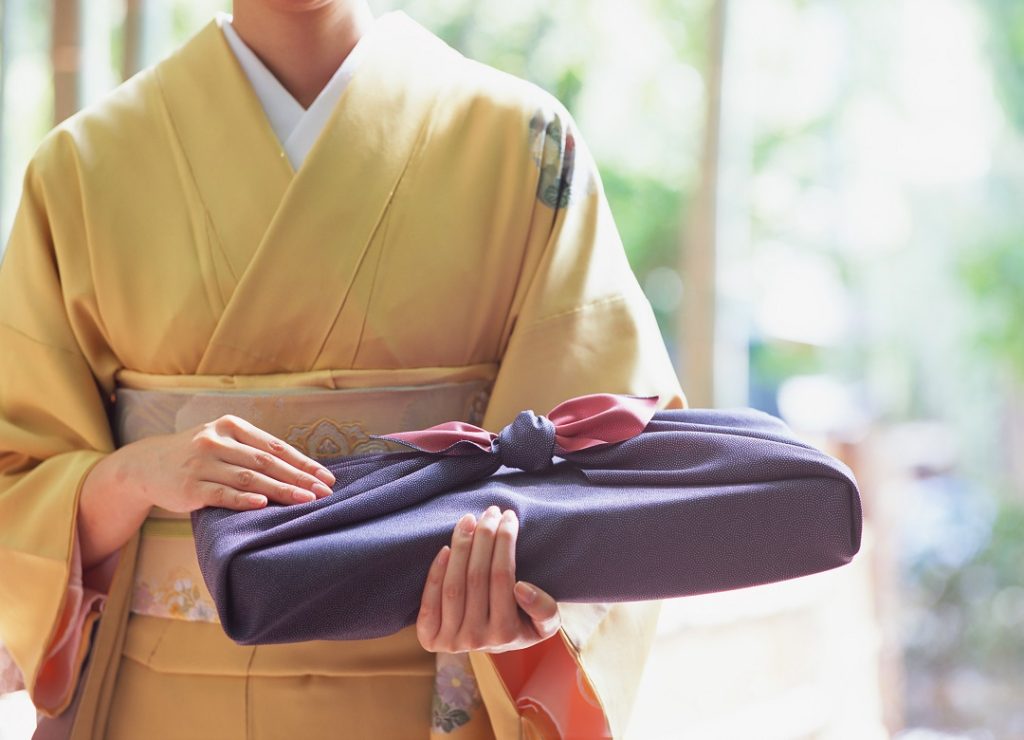In a world increasingly conscious of the environmental impact of consumerism, traditional practices that prioritize sustainability have gained renewed attention. One such practice is the art of Furoshiki, a Japanese tradition that involves using a square piece of cloth to wrap and carry items. Beyond its practical utility, Furoshiki embodies a profound philosophy of eco-friendliness and minimalism. In this article, we will explore the origins, techniques, modern applications, and environmental significance of Furoshiki.

The Origins of Furoshiki
The word “Furoshiki” (風呂敷) itself is a combination of two Japanese words: “furo,” meaning bath, and “shiki,” meaning spread. Historically, Furoshiki was used to bundle and carry clothes to the communal bathhouses in Japan during the Nara period (710–794 AD). This practice evolved over the centuries, and Furoshiki became a versatile means of wrapping and carrying various items, from clothes and gifts to food and everyday essentials.
Techniques and Styles
The art of Furoshiki involves a variety of folding, knotting, and tying techniques. The choice of technique depends on the shape and size of the object being wrapped. Some common methods include the “basic wrap,” “bottle wrap,” “two-point wrap,” and “three-point wrap.” Skilled practitioners can create beautiful, secure wraps with minimal effort.
Furoshiki cloths come in different sizes and patterns, from traditional designs to modern, vibrant prints. They are typically made from various materials, including silk, cotton, and synthetic fabrics. The choice of fabric can influence the durability and aesthetic appeal of the Furoshiki.
Environmental Significance
One of the most compelling aspects of Furoshiki is its environmental friendliness. In a world grappling with plastic waste and overconsumption, Furoshiki stands as a sustainable alternative to disposable wrapping materials. By using a single piece of cloth repeatedly, Furoshiki significantly reduces the need for single-use items like gift wrap and plastic bags.
Furoshiki aligns with the principles of reduce, reuse, and recycle. It reduces waste by eliminating the need for disposable wrapping paper or bags. It promotes reuse as the same Furoshiki cloth can be used for multiple purposes over an extended period. Additionally, when a Furoshiki cloth eventually reaches the end of its lifespan, it can be recycled or repurposed, further minimizing its environmental impact.
Moreover, the production of Furoshiki often involves traditional craftsmanship and local artisans, supporting sustainable practices and local economies.
Modern Applications of Furoshiki
While Furoshiki has ancient roots, it is far from being a relic of the past. In fact, it has experienced a resurgence in popularity in recent years, both in Japan and around the world. Its modern applications extend to various aspects of daily life:
Eco-Friendly Gift Wrapping
Furoshiki is an elegant and sustainable way to wrap gifts. It not only adds a personal touch but also reduces the waste associated with traditional gift wrap.
Grocery Shopping
Furoshiki cloths can replace plastic bags when shopping for groceries or other items. They are sturdy, versatile, and eco-friendly.
Fashion and Accessories
Some designers have incorporated Furoshiki elements into clothing and accessories, promoting its aesthetic appeal and functionality.
Picnics and Outdoor Activities
Furoshiki can double as picnic blankets or carryalls for outdoor excursions.
Home Décor
Framed Furoshiki cloths can serve as unique and decorative wall art, showcasing their intricate designs.
Cultural Exhibitions
Furoshiki is often featured in exhibitions and cultural events that highlight Japan’s traditional arts and crafts.
The Essence of Furoshiki
Beyond its practicality and environmental benefits, Furoshiki embodies a deeper philosophy. It encourages mindfulness about consumption and waste, urging us to consider the environmental footprint of our choices. Furoshiki reminds us of the elegance and simplicity of traditional practices in a world inundated with disposable convenience. It invites us to slow down, appreciate the art of wrapping, and find beauty in the ordinary. In an era of excess, Furoshiki offers a path to conscious consumption and a sustainable future.
Conclusion
Furoshiki is more than just a cloth; it’s a symbol of eco-conscious living and an homage to tradition. As we grapple with environmental challenges, this ancient Japanese art form serves as a reminder that sustainability can be both practical and beautiful. In adopting Furoshiki, we not only reduce waste but also unwrap a world of elegance and mindful living.










